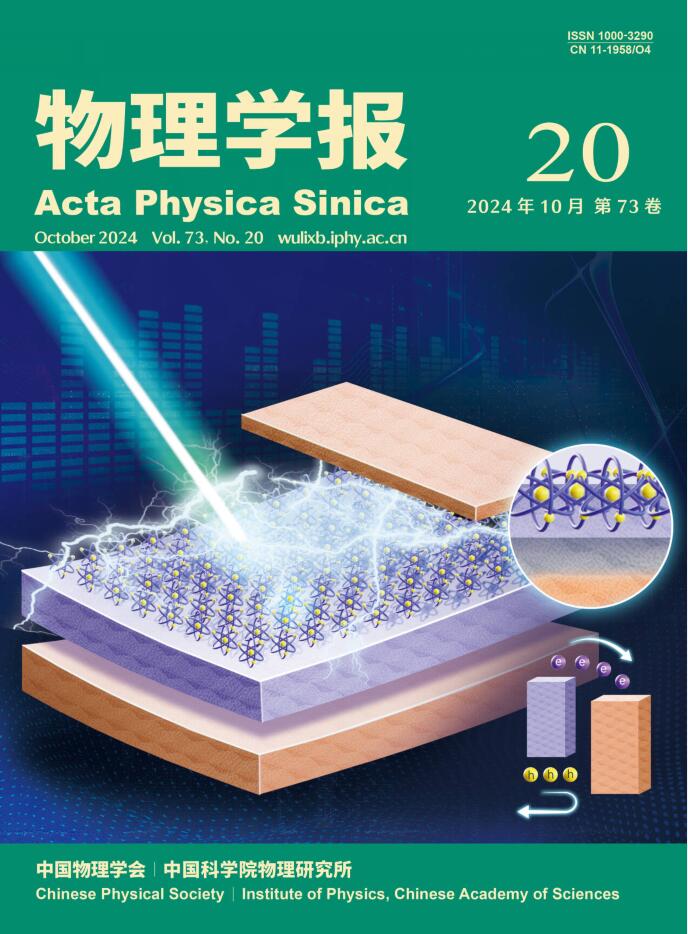非均相混合条件下氘、氚聚变反应速率的研究
IF 0.8
4区 物理与天体物理
Q3 PHYSICS, MULTIDISCIPLINARY
引用次数: 0
摘要
在惯性约束聚变研究中,由流体动力不稳定性、孤立缺陷或动力学效应引起的壳体材料与气体燃料的混合是理解内爆性能退化的关键。了解混合机理并减小其影响对实现点火和高增益具有极其重要的意义。近年来,混合形态对亚网格级热核反应速率的影响因其对燃烧速率和聚变过程的直接影响而逐渐引起人们的关注,研究不同混合形态下热核反应速率的物理模型具有重要的科学意义和应用价值。本文推导了亚网格尺度下不同燃料浓度质量分布对热核反应速率的依赖关系。基于热力学平衡和理想气体状态方程,通过一维球面几何扩散方程的解析公式和数值解,揭示了扩散混合主导下热核反应速率随混合形态演化的物理规律。认为混合量主要通过影响燃料体积分数直接影响热核反应速率,由非均质混合尺度和扩散系数决定的混合扩散时间直接影响热核反应速率的演化行为。在蒙特卡罗方法直接模拟扩散过程得到相互扩散系数的基础上,定量研究了低z碳与高z金混合对热核反应速率的影响差异。低z和高z混合粒径分别为0.1μm和0.01μm的非均质混合物在燃烧速率方面可视为原子混合物,低z和高z混合粒径分别为10μm和1μm的非均质混合物在燃烧速率方面可视为理想块状混合物,中间状态的非均质混合物粒径需采用本文的热核反应速率非均质混合模型进行评价。最后,将物理模型与在OMEGA激光设备上进行的“MARBLE Campaign”非均质混合效应实验的三维模拟结果进行对比。该实验设计为分离反应物实验,胶囊内填充有不同大小的氘化泡沫和HT气孔,涵盖了从原子混合到块状混合的典型混合形态。验证了混合形态演化及其对热核反应速率影响的理论评价的可靠性。该工作对国内惯性约束聚变混合效应实验的设计和改进具有重要意义。本文章由计算机程序翻译,如有差异,请以英文原文为准。
Investigation on the fusion reaction rate of deuterium and tritium under heterogeneous mixing
Mixing between shell material and gas fuel, caused by hydrodynamic instability, isolated defects, or kinetic effects, is the key to understand the degradation of implosion performance in the research of inertial confinement fusion. Understanding the mixing mechanism and reducing its impact is of extreme importance to achieve the ignition and high gain. The impact of mixing morphology on thermonuclear reaction rate in sub grid level has gradually attracted people’s attention in recent years due to its direct influence on burn rate and fusion process, the study on physical model of thermonuclear reaction rate in different mix morphology has important scientific significance and application value.In the paper, the dependence of thermonuclear reaction rate on mass distribution of different fuel concentrations at sub grid scale is derived. Based on thermodynamic equilibrium and ideal gas equation of state, the physical law of the evolution of the thermonuclear reaction rate with mix morphology under the dominance of diffusion mixing is revealed through analytical formula and numerical solution of diffusion equation in one-dimensional spherical geometry. It is convinced that the mixing amount directly affects the thermonuclear reaction rate by mainly affecting the volume fraction of the fuel, and the mixing diffusion time determined by heterogeneous mixing scale and diffusion coefficient directly affects the evolution behavior of the thermonuclear reaction rate. Furthermore, based on mutual diffusion coefficient obtained from direct simulation of diffusion process by Monte Carlo method, the difference of impact to thermonuclear reaction rate for low-Z Carbon and high-Z gold mixing is quantitatively investigated. Heterogeneous mix size with 0.1μm, 0.01μm respectively for the low-Z and high-Z mixing can be treated as atomic mix in burn rate aspect, and heterogeneous mix size with 10μm, 1μm respectively for the low-Z and high-Z mixing can be treated as ideal chunk mix in burn rate aspect, and heterogeneous mix size in the middle state needs to be evaluated by using the heterogeneous mixing model of thermonuclear reaction rate in the paper. Finally, the physical model is compared with 3D simulation results of the heterogeneous mixing effect experiment called "MARBLE Campaign" carried out on OMEGA laser facility, which is designed as a separated reactant experiments and capsules are filled with deuterated foam and HT gas pores of different size, covering typical mix morphology from atomic mix to chunk mix, which validate the reliability of the theoretical evaluation about the evolution of mixing morphology and its impact to thermonuclear reaction rate.This work is significant for the design and improvement of inertial confinement fusion mixing effect experiment in China.
求助全文
通过发布文献求助,成功后即可免费获取论文全文。
去求助
来源期刊

物理学报
物理-物理:综合
CiteScore
1.70
自引率
30.00%
发文量
31245
审稿时长
1.9 months
期刊介绍:
Acta Physica Sinica (Acta Phys. Sin.) is supervised by Chinese Academy of Sciences and sponsored by Chinese Physical Society and Institute of Physics, Chinese Academy of Sciences. Published by Chinese Physical Society and launched in 1933, it is a semimonthly journal with about 40 articles per issue.
It publishes original and top quality research papers, rapid communications and reviews in all branches of physics in Chinese. Acta Phys. Sin. enjoys high reputation among Chinese physics journals and plays a key role in bridging China and rest of the world in physics research. Specific areas of interest include: Condensed matter and materials physics; Atomic, molecular, and optical physics; Statistical, nonlinear, and soft matter physics; Plasma physics; Interdisciplinary physics.
 求助内容:
求助内容: 应助结果提醒方式:
应助结果提醒方式:


